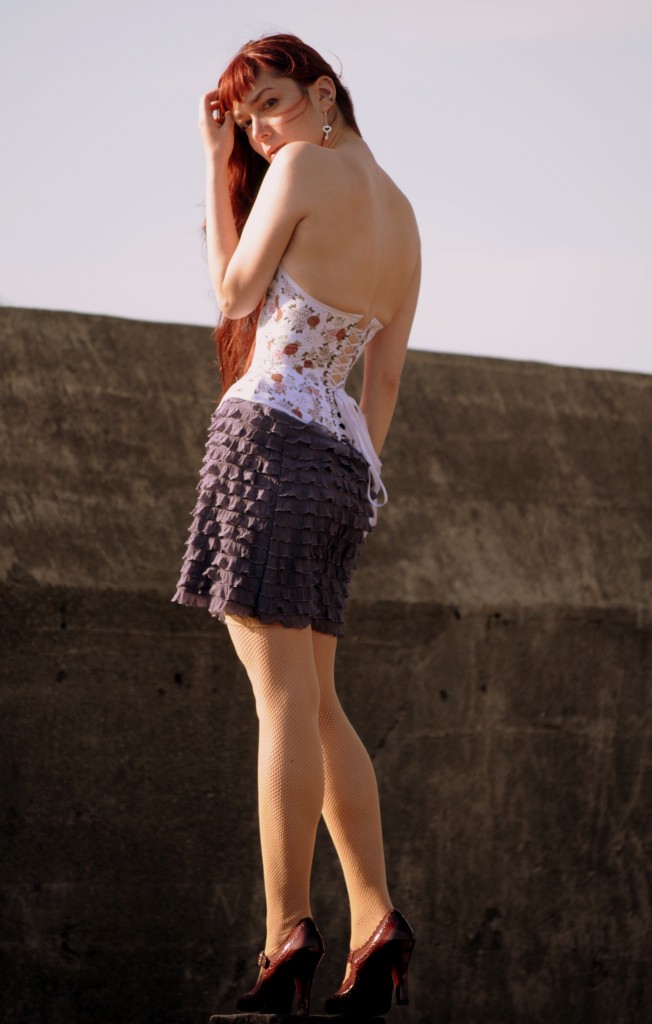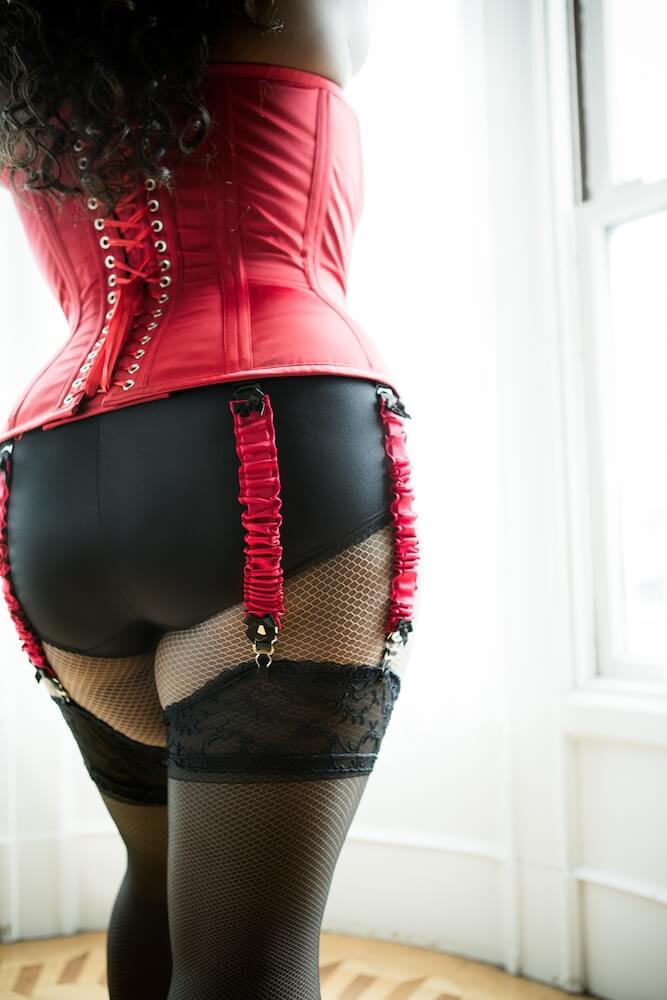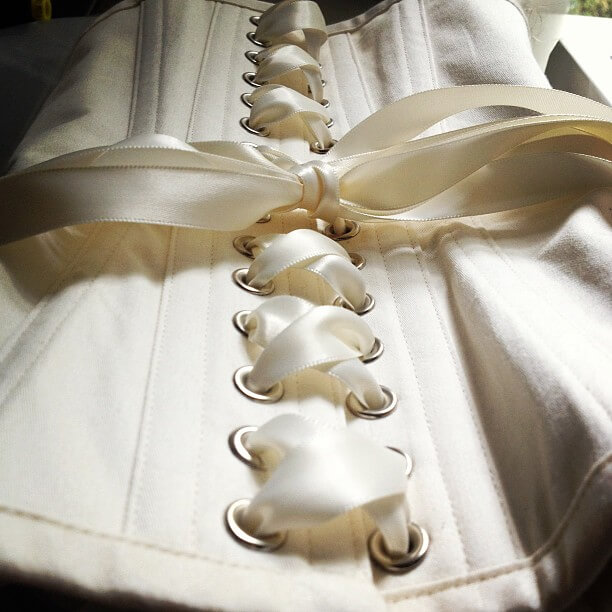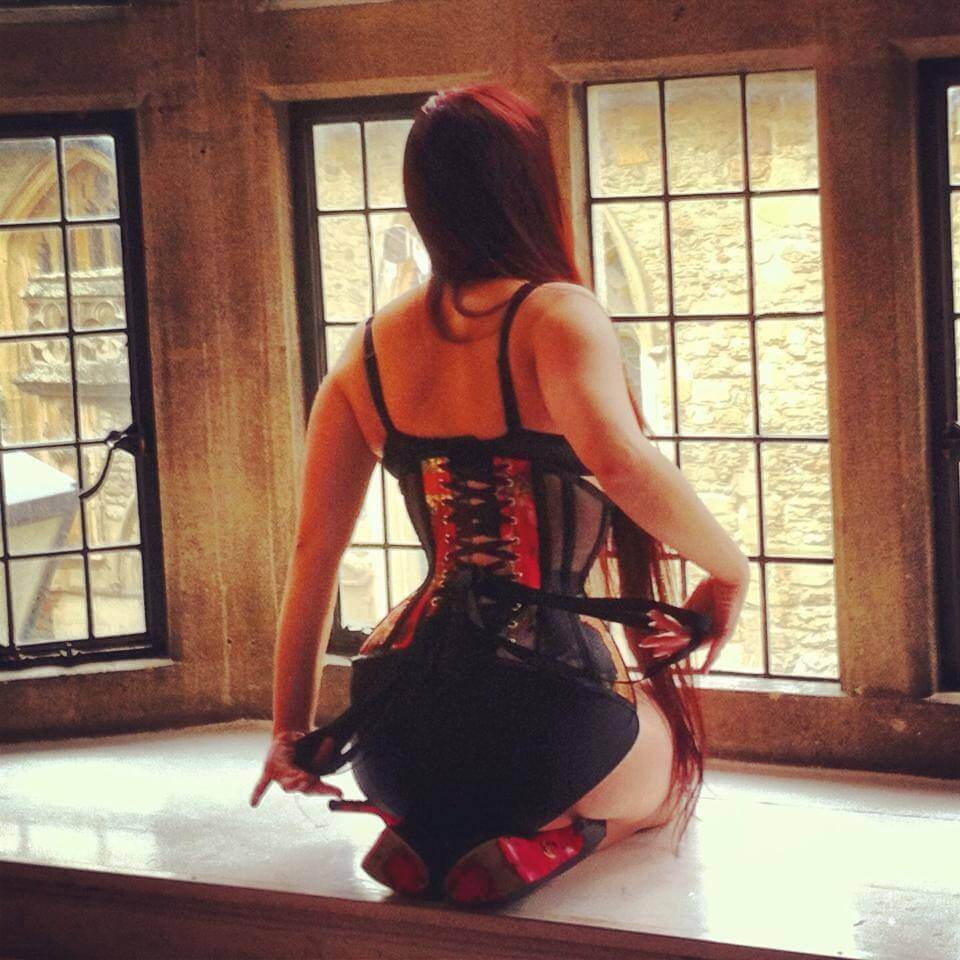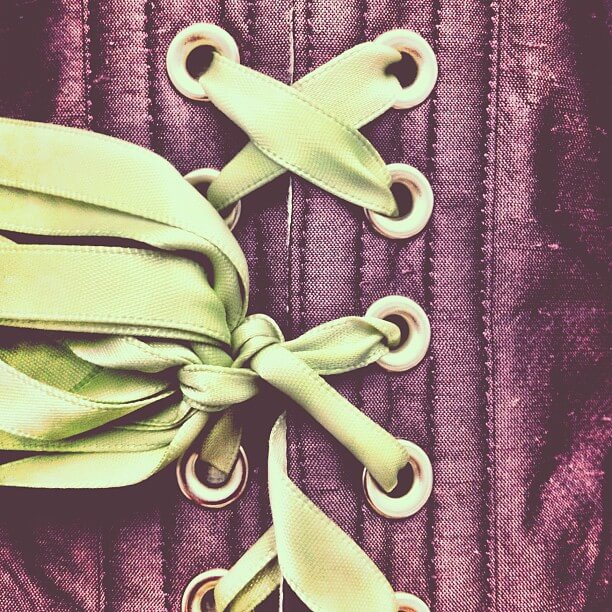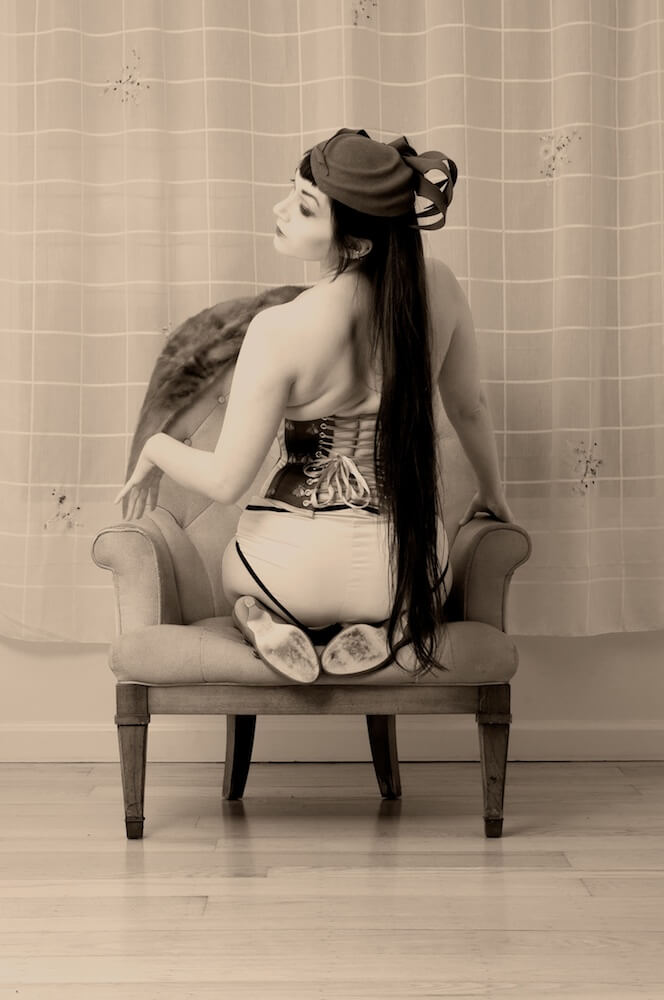Corset Talk: All About Lacing, Part 1
I had originally hoped to write a single article about corset lacing, but as my draft waxed on, I quickly realized there are too many facets of the topic to do justice in a single piece. Lacing is widely recognized as the signature, defining feature of a corset. Though that's a gross oversimplification of a garment that is truly a feat of engineering, it is true that much of a corset's structure, fit, and wearability is dependent upon its lacing, much more so than most corset wearers realize. There are many factors that come into play in the relationship between ribbon and grommet. Today I'll be focusing on those materials themselves and their place in corset construction, hopefully demystifying some of the terminology and information that comes up as you research corsetry and corsetmakers.
Supporting Structure
The grommets and lacing of a corset require additional support to keep them firmly anchored and laying smoothly. The weight of the fabric may be supplemented with additional layers. The grommet strip is flanked by narrow flat steel bones (though I recently spoke with a corseting colleague who sometimes replaces the bone at center back with a spiral steel as it is more comfortable for her lordosis, proving once again that there is an exception to every rule.) "Lacing bones" are also available, which are wide flat steel bones with holes for grommet placement punched through them. Lacing bones tend to be fairly stiff, so if you have a particularly curved back or are sensitive to pressure, I would not recommend them.
Hardware
"Grommets" and "eyelets" can mean different things or be used interchangeably depending on the country, and like all materials, come in varying levels of quality. Do not be taken aback if a corsetiere says they use "eyelets" instead of grommets. Either way, what you want is two-part hardware: grommet (or eyelet) and washer. Chances are, beyond that, a corsetiere's reputation and portfolio will represent the quality of their work's shaping and longevity. Historical reproduction corsets may feature meticulously hand-stitched eyelets with no metal hardware at all. The hole through which the grommet is set can be created using either an awl (which pushes the thread apart) or a punch (which creates a small hole in the fabric). Much like the debate between spiral and steel boning enthusiasts, there is no one right answer, only that which works for each corsetiere when combined with all the other specific elements of their process. Particularly thick fabrics (such as heavy leathers) may call for long-shank grommets as the grommets are prone to popping off otherwise.
Grommet Spacing
As a general rule, grommets on a corset should be set no farther than about 1" apart from each other. High-end and antique corsets often, though not always, have the grommets spaced closer at and next to the waist, the better to accommodate and distribute the additional pressure in this region. This extra detail is a nice touch, but don't use its absence as an earmark of inferior quality. If the grommets are set close enough to begin with, using a reverse bunny lacing style will pick up the slack. (Never fear, there will be more about lacing styles in another installment.) If you are tightlacing and feel you need the additional support, most corsetieres working on a made-to-order or custom basis can likely accommodate you. However, if your corsetiere is using lacing bones, the grommet spacing is predetermined and unalterable.
Lacing
As for the lacing, there are many options. Some folks prefer sturdy cotton "official" corset lacing. I've heard parachute cord is good. Most modern corsetieres have taken to using polyester satin ribbon, which comes in a variety of widths and colors. Though there's an instinctive distrust of ribbon (doesn't it slip? Won't it break?), it actually holds quite well and is incredibly easy to replace when it does eventually wear out. I personally prefer satin ribbon over cotton lacing because it tends to glide more easily through grommets (also, it's pretty), but each corsetiere and corset wearer will have their own preference. The single most important feature is that the lacing should be entirely non-stretch.
Stay tuned for future installments in this All About Lacing series, which will cover topics such as lacing methods and information about the all-important lacing gap, both of which are tied to fit, comfort, and wearability.





